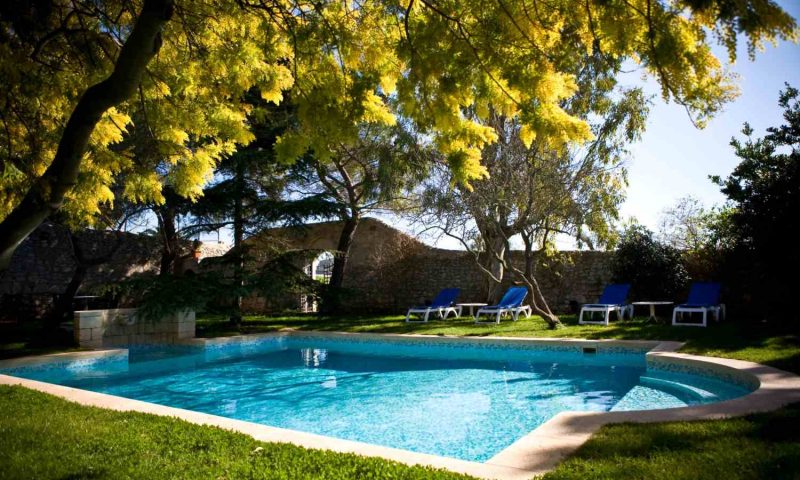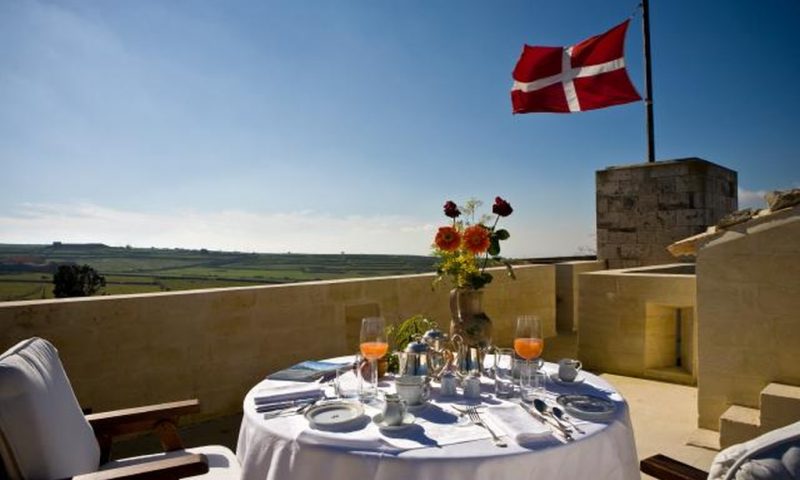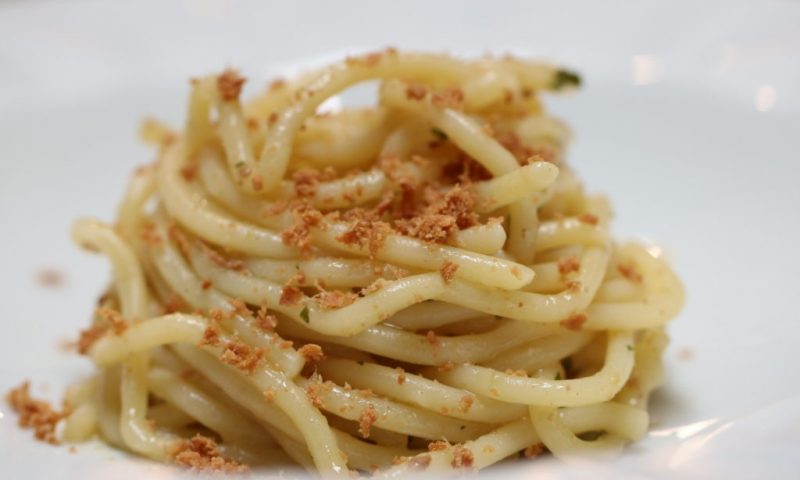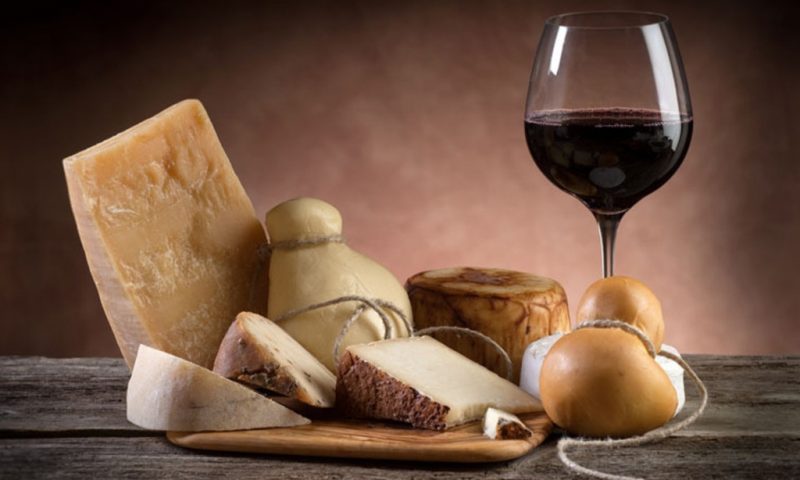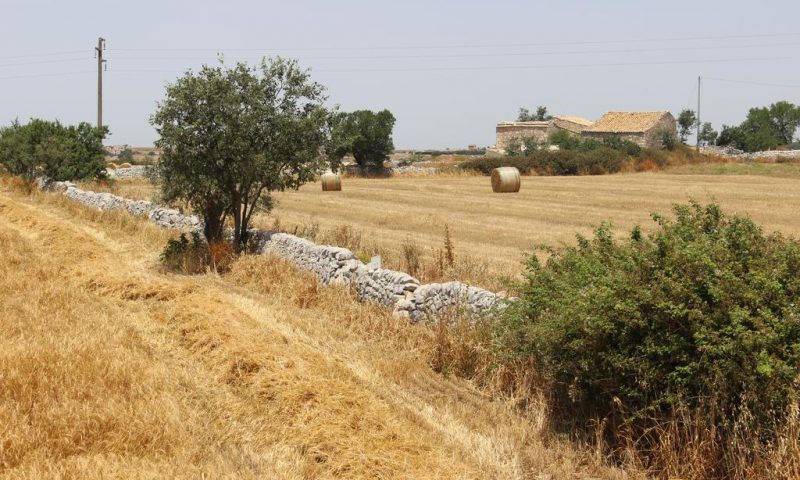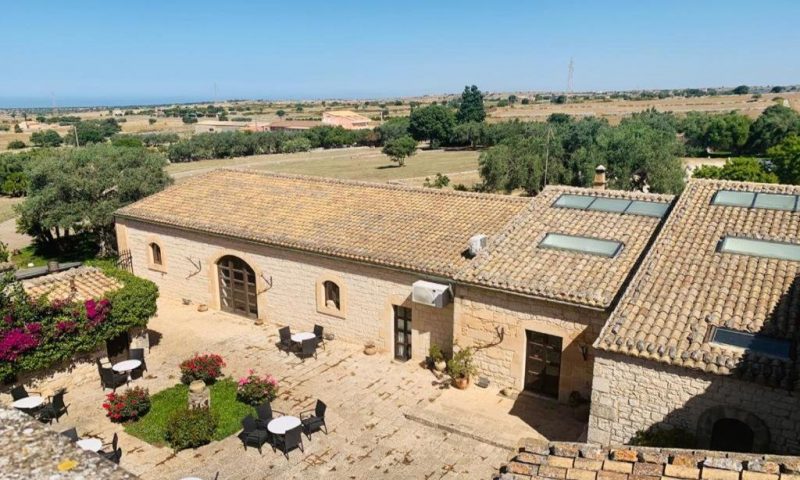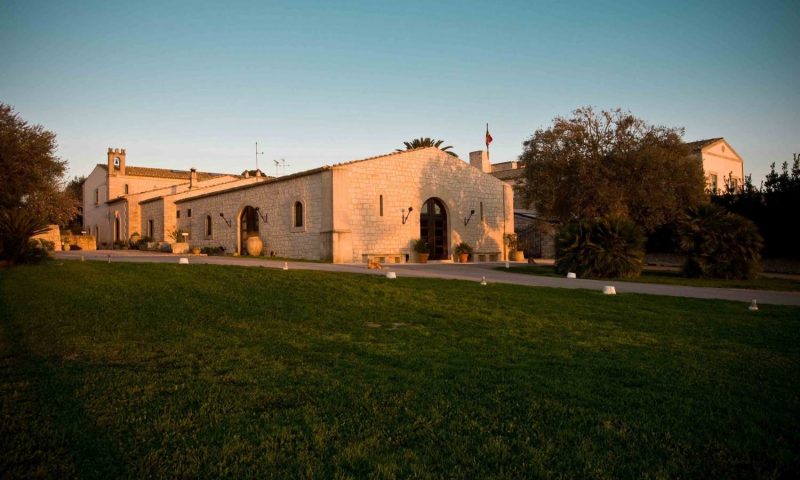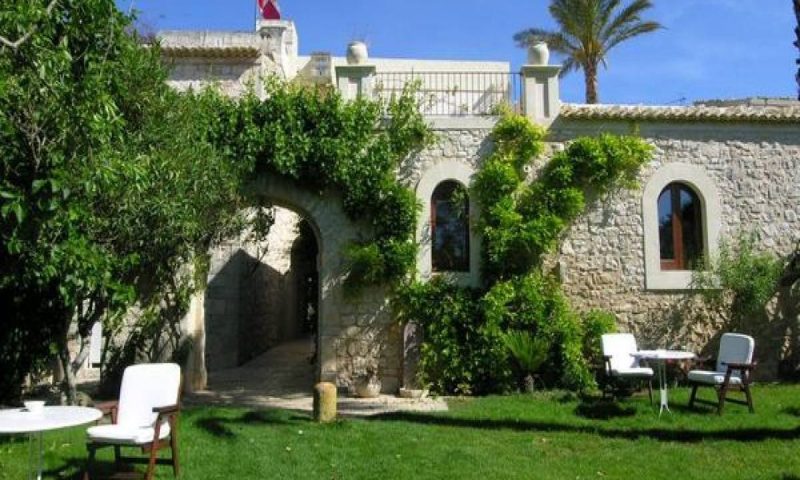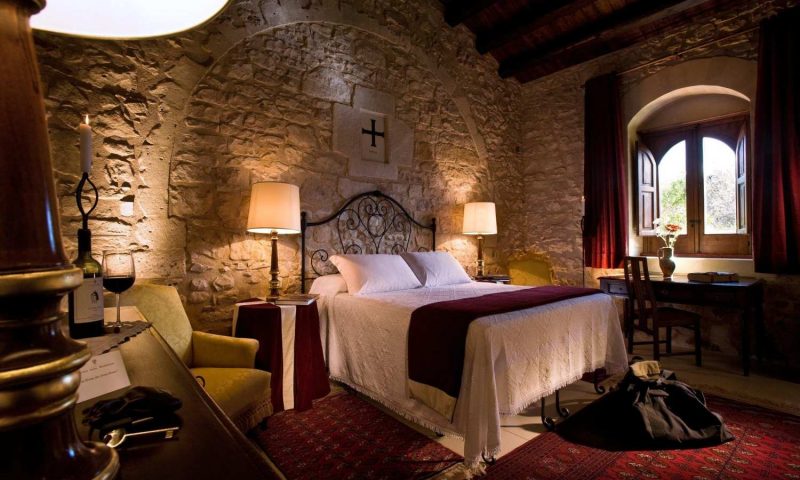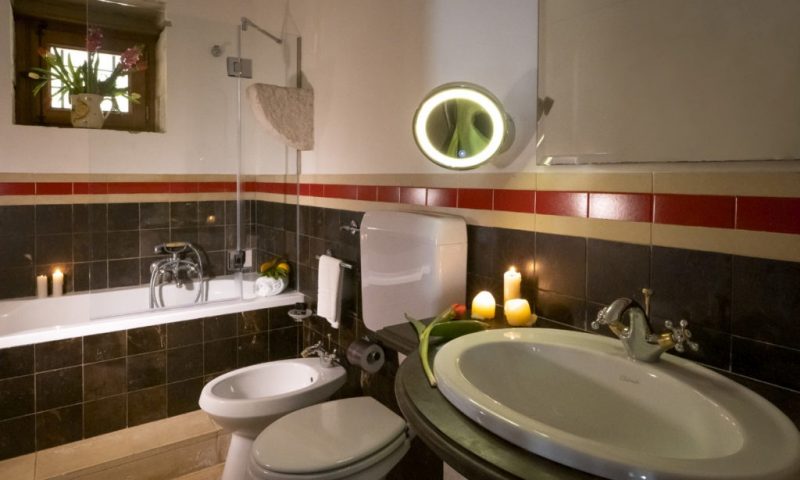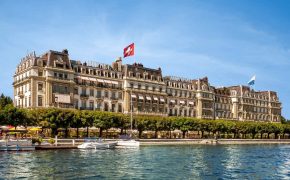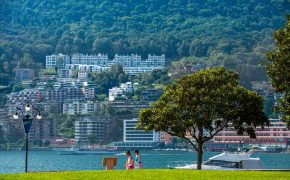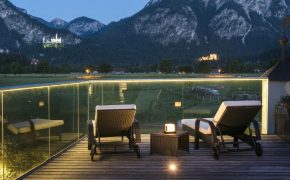The Giubiliana hermitage (13th and 16th centuries) is located south of Ragusa where the plateau is covered with carob trees and slopes gently towards the sea; facing the islands of Malta and the African coast, a horizon full of charm and memory.
The estate was part of the ancient ecclesiastical fief of Renna sec. XII former Arab farmhouse (Rendet Gebuni) of which it constituted a sort of hermitage and fortified beam in a dominant position on the sea to defend against the frequent raids of the Barbary pirates.
The recent restorations of the 14th-century north tower have highlighted the stone coat of arms of the Teutonic order which would suggest a commendation of the order in this eastern part of Sicily and which together with the crossroads of Lentini and the fief of Margana testifies to the great diffusion of this order.
Order in Sicily in the 1300s following Frederick II Hoenstaufen who used the order as his personal guard and whose Grand Master Hermann Von Salza was Frederick’s most important adviser.
The knights of the Order of St. John in transfer to the nearby island of Malta given to him by Charles V used the fortified structures of the Hermitage in the first half of the 16th century and their passage was documented during the restoration works.
In the eighteenth century the Hermitage was acquired by the Nifosì, a family of the landed aristocracy of the plateau who used it as a fortified beam until the last heir Vincenza Jolanda Nifosì of Canalazzi decided to start the restoration and open the estate to hospitality.
The hermitage of the Giubiliana is probably the only hotel in Sicily with an archaeological site inside; in the northern part of the park, there is a Necropolis from the 5th – 3rd century BC. In fact, the ancient and persistent anthropization of the site dates back to the late Bronze Age with cave tombs on the north side of Cava Renna.
The widespread presence of agricultural settlements in the Hyblean Plateau is then documented since the fifth century BC by small Greek and Greek-Sicilian communities. The Necropolis testifies to the presence of a farm which in Roman and Byzantine times was then progressively fortified following the imminent Arab threat (Arab conquests of Sicily 844-845).
Built in Megalithic technique with heavy limestone blocks, the farm was subsequently incorporated into the medieval structure by the fortified Hermitage and traces of the Ancient Structure remain in a corner of the tower and in a “storeroom” (to hide the grain) of the late age. -Imperial (2nd century AD) discovered during the restorations under an arch of the Corte Grande.
The necropolis, which typologically follows that of other documented sites, has seven “box” tombs dug into the rock and originally covered with stone slabs. The tombs were protected by channels to prevent rainwater from washing away and are still visible today.
The tombs, exceptionally well preserved, were excavated in 1982 by the Superintendency of Ragusa, with the discovery of numerous furnishings, in the form of ceramic material datable between the 4th century BC and the 2nd century AD and bronze jewelry and glass pastes. from tomb 1, certainly a woman’s grave goods. The material found will soon be exhibited in the adjacent “Antiquarium”.
THE VILLAS
The hospitality offer of the Eremo della Giubiliana is expanded by the presence within the estate of stone villas and cottages that our kind guests can choose as an alternative to the rooms and suites of the main building.
The Villas enjoy a dominant position on the plateau and the sea with the expanded spaces of several hectares where guests can relax in total privacy while still taking advantage of all the services of the Eremo della Giubiliana with the swimming pool, the wellness center, breakfast, the bar, the Don Eusebio restaurant and all the excellent offer that has made our Hotel famous.
DONNA JOLANDA SUITE
Located in the fourteenth-century north tower, the oldest part of the Giubiliana hermitage, built by the Teutonic Knights of the Grand Master Hermann Von Salza, develops on the main floor of the tower with two rooms characterized by cross vaults and 15th century floors inlaid with pitch stone and soft limestone. All furnishings, chests of drawers and fratino desks are Sicilian ‘600 coming from family inheritances.
Through a chestnut staircase and a skylight it is possible to access the crenellated terrace of the Tower from which you can enjoy an extraordinary view of the plateau and the coast with the islands of Malta in the background; on request it is possible to dine on this terrace with an exclusive service specifically dedicated. Dedicated to Donna Vincenza Jolanda Nifosì of Canalazzi, landowner of the Eremo della Giubiliana.
DELUXE TWIN SUITE
These beautiful twin rooms located on the first floor of the Ancient Teutonic Wing of which they retain the splendid fourteenth-century mullioned windows, have a common access that allows them to be disengaged as a single large Suite, ideal for two couples of friends or for a family.
Furnished with fine Sicilian period furniture, they have access to a large terrace overlooking the coast and the islands of Malta, the large bathroom is disengaged from a boudoir with access to the terrace of the North tower and the garden below.
DON ESUSEBIO RESTAURANT
The large archivolt room of the ancient refectory of the Knights of the Order of San Giovanni is the historic “stage” of the Don Eusebio restaurant, 16th century altarpieces, antique prints and antique Sicilian chests complete the precious furnishings of this extraordinary environment with large windows overlooking the centuries-old olive trees of the park.
The cuisine, prepared by our Food and Wine Master, is the genuine and refined one of the ancient Aristocrazia Terriera of the Ragusano plateau based on the products of the estates that managed by the owners of the Hermitage with the ancient agrarian rotations have taken the ancient grains with ground flours in stone in its own mill the wild vegetables the products of the garden and the breeding of black pigs and ancient Sicilian hens with white eggs that you can taste in the Eggs Menu.
Our thematic menus divided according to the productive culture of the territory in Masseria di Mare, Masseria di Terra and Antique Gourmet allow our guests to develop a food and wine journey to discover the true Mediterranean cuisine and those ancient recipes that draw their origins from a thousand influences cultural heritage of this extraordinary island.
THE CUISINE
A good cuisine of ancient traditions such as that of the Hermitage cannot fail to be based on the raw materials of the territory. The Masserie of the Hyblean Plateau are the historical places of this extraordinary production and that is why we have titled our menu “La masseria di Terra”, distinct from that of the sea, whose historical motivation is illustrated below in the reference text.
Place of production and more, the “Masseria” insisted on a large portion of territory (generally at least thirty hectares), which since the 1500s had been divided into “sluices” delimited by the famous dry stone walls that characterize our landscape.
Every ”identifies its own productive personality and a different quality of the land that was often highlighted in the toponym with which it was called by the peasants, eg. vignale (suitable for the vineyard), cicerata (excellent chickpea production), favata, etc.
This almost maniacal search for the productive personality of the land and of every single plot was reflected in the virtuous cycle of crop rotations, which generally began after a good fertilization with which an enriching crop of legumes and still followed by at least two years of grazing rest. modicana “whose milk with a high fat content allowed the production of the famous stretched curd cheese, caciocavallo, today” Ragusano DOP “
The dried legumes and in particular the broad beans were then fundamental for the fattening of meat animals, to which they gave an extraordinary texture and aftertaste; cattle, sheep, but also the famous black pigs, once widespread throughout the Sicilian territory and today relegated only to the Nebrodi area and from which ancient products such as lard, jelly and dry sausage originate.
The productive and self-sufficient enclave of 2Masseria ”was completed by the farmyard animals reared, also for their eggs, using the farm’s wheat and barley. The vegetable gardens, enclosed by high walls and very similar to the oases of North Africa in the cultivation organization but also in the essences and in the irrigation system, were the only unit of intensive cultivation and produced fruit and vegetables, wine and ‘oil.
SEA FARM
The Masserie whose territories were lapped by the sea had a productive singularity. In fact, from May to late October (the so-called “corsali” time) the peasants were transformed into fishermen and pushing small boats into the sea they devoted themselves mainly to fishing for blue fish; Sardines, mackerel, tuna and mahi-mahi were then salted and stored in small wooden barrels and constituted an important part of the agricultural fee paid to the landed aristocracy in nature, in the form of “carnagghi”.
Cheeses, meat and eggs were integrated in the “Masserie di mare” with salted fish or in oil but also with fresh fish caught off the coast, therefore small in size but particularly tasty.
The farms that were located in stretches of coast affected by the great gods were transformed specializing in fishing and processing of fine fish; the Tonnare, of which an extraordinary example also from an architectural point of view is that of the “Bruni di Belmonte” in Portopalo.
However, beyond the Tonnare, the “Masserie di mare” remained a productive hybrid and one of the reasons why a “seafaring” worthy of the name has never developed in the Hyblaean territory and the fish markets only appeared in the area at the end. of the century around the “loaders” of Pozzallo and marina.
The widespread presence of octopuses, cuttlefish, mullets, scorpion fish, sea bream as well as preserved fish, in the ancient recipes of the Hyblean aristocracy is essentially due to the existence (strange but true for a Mediterranean territory) of the sea farms and refers to them our cuisine in offering guests extraordinary fish dishes mainly caught offshore in an artisanal way and with small boats as in the past.
Guests will discover the taste of the small fish of the Iblea Mediterranean coast and the refined simplicity of the recipes of the “Masseria del mare”.
ANTIQUE GOURMET
The Eremo della Giubiliana is an important example of historical farm and the accommodation still insists on the original property of over sixty hectares cultivated according to the ancient cultivation techniques of the plateau.
The productions are used largely by our kitchen starting with durum wheat whose flour is the basis for the realization of the extraordinary focaccia and pasta, while the beans are still used to fatten cattle and black pigs of the Nebrodi.
Our guests will immediately understand the great quality of these raw materials, the recognizability of the flavors and the many cultural influences present in our recipes, the result of an incredible historical stratification that has made the cuisine of this fascinating island great.
THE CELLAR
The cellar of the Hermitage is a very special place having been built in the medieval crypt located under the ancient Church of the Knights of the order of San Giovanni. The charming environment with the supporting arches and the ancient stone floor is characterized by a great thermal inertia with a constant temperature perfect for the maintenance and refinement of our wines.
Furnished with a large chestnut refectory table (from the 17th century), the crypt is available to our guests for intimate dinners and tastings of our products combined with the best Sicilian wines.
SPA ASPHODELUS
The Asphodelus all’Eremo wellness area is located in the most exclusive area of the park, in front of the archaeological site dating back to the 5th-3rd century BC
Guests can enjoy the view through the large glass doors while sitting in the comfort area and drinking an infusion or lying directly on the grass among ancient olive trees to prolong the positive effect of one of the exclusive treatments based on natural elements, such as the oil and wine of the Hermitage.
EASTERN SICILY
The Eastern lands of a very different Sicily, the one of the Hyblean plateaus and its pristine nature, of carob forest and stone walls, and in the background the sea, always present in the landscape and in the heart of this fascinating island.
Located in a strategic position, at the intersection of ancient trazzere and medieval paths, the Eremo della Giubiliana dominates this extraordinary territory, where a team of passionate specialists has prepared for you the most evocative itineraries and the most exciting way to discover them.
The real magic of this place consists perhaps in having been able to combine recovery of the past and contemporary reality, represented at the Hermitage by the presence of the private airport (no landing fee with free handling for the pilots of the Hermitage) and airplanes, which makes it logistically autonomous and expands the possibilities of introspection of the Sicilian territory, projecting it towards a wider, Mediterranean horizon, and allowing, through unexplored and fascinating routes, to compare the islands and African territories.
